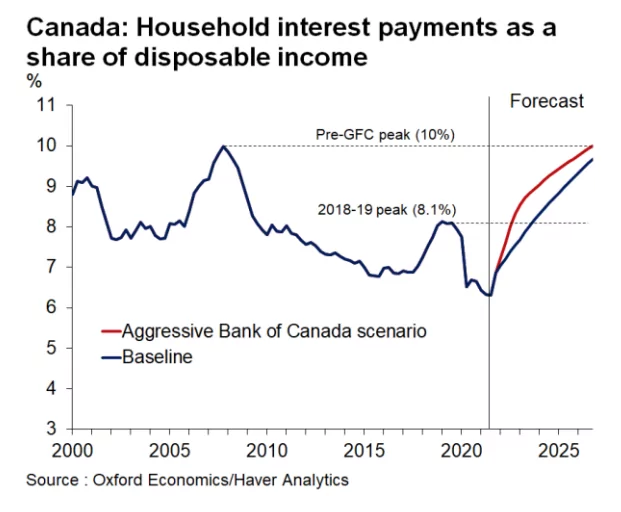Almost every Canadian needs to borrow some money and takes no refusal instant loan Canada at some point in their lives. Whether it’s for your personal aims or making important purchases, getting additional funds can help us. When you decide to launch a startup, make a big-picture purchase, or buy your first auto, you will most likely turn to some crediting institutions.
There are local banks, credit unions, and an alternative lender who may issue supplemental funding for your needs. Learn how different lending options work before you decide to request a loan.
A Variety of Lending Options and How They Work
Consumers have a chance to choose among several lending types. Each type of debt works for a certain financial situation or disruption that occurs. What is a loan? It is a financial agreement between a borrower and a creditor.
The bank, online lender, or credit union may serve as a creditor. So, both the consumer and the creditor make an arrangement with specific conditions and terms stating the borrower will pay the funds off within a defined amount of time. Statistics Canada states that the Canadian household debt reached a staggering $2,116.3 billion in April 2022.

The creditor charges interest rates in return for this aid. The annual interest is called the APR or the annual percentage rate. How does it work? For instance, you request a $2000 loan for one year. If the APR for this loan is 10%, you will need to pay $200 over the course of the year. The reason for charging this interest is the desire of lenders to protect themselves from the risk of borrowers’ default.
Is It Good Debt or Bad Debt?
Before you decide to take out any lending options, you need to understand how can this debt actually improve your current financial situation and if it is a suitable solution to your existing issues. For example, good debt may be a student loan to help you land a better-paid job in the future, or a home renovation loan to increase your home’s value.
Bad debt is the borrowing option that is taken out to purchase items that have short-term value. If you are taking out a loan to go on a vacation or want to buy another pair of designer jeans, it’s an example of bad debt. When you can’t afford to live within your means, it’s better to boost your earning potential rather than add debt that may affect your credit.
Types of Credit
Every crediting option is different. Not all loans work in the same way and serve the same purpose. Some of them are near-term lending solutions while others work more for the long-term. Some forms of debt have a fixed interest rate while others have a variable interest. You may choose between lines of credit, personal loans, credit cards, student loans, etc. Let’s cover the basics of the most popular lending options.
Credit Cards
It’s easy and convenient to obtain a credit card for your daily needs. Some Canadians even own multiple cards for various purposes. Credit cards offer you continuous access to additional funds.
You can make any purchase provided that you pay down the minimum balance on the card each month. There are many credit cards that offer special bonuses, extra miles for travel, discounts, and other perks such as cashback.
They are widely accepted and quick to utilize as you may withdraw the necessary amount of cash at the nearest ATM or cover an important purchase using your card. Some costs and finance charges are associated with cards. For instance, you need to pay an annual fee for using them. Also, borrowers should pay interest if they fail to pay the full balance due every month.
Personal Loans
These are long-term options tailored to the needs of Canadian consumers. You may take out a personal loan at any crediting institution. Local banks, credit unions, as well as online crediting companies may issue the funds in the form of a personal loan. This option can be requested for several months or even years depending on your needs.
For example, a mortgage or a car loan are typical forms of a personal loan. The interest rates for this lending option are lower compared with alternatives. The repayment term can be long while the interest is fixed so that you repay the same amount each month.
Student Loans
This is one of the main investments in your future. Although it’s an important aspect of your life, you need to take this borrowing option seriously. The federal and provincial governments can issue student loans to consumers. This program lends students money while they are in their post-secondary education program.
The borrowers begin repaying this debt six months after they leave school. Pay attention that this debt should be paid together with the interest. Such loans are not free but they offer reasonable interest rates. More than that, bursaries and scholarships may help you lower the amount of student loan you need to request.
Tips for Borrowers
Take some time to shop around and compare interests at various crediting institutions. Don’t accept the very first offer you are given. Pay attention to the rates and finance charges as they depend on the size of the loan you take out.
So, don’t request a larger sum than you currently need to cover your financial expenses. If you can’t afford to pay the debt off, it’s better to use alternative ways of finding money or boosting your earning potential.
In conclusion, there is a wide choice of borrowing options for Canadian consumers now. You should review the terms of the option you select, compare rates at several service providers, and make your choice.
If you can’t afford to make on-time payments, your credit score may suffer. Hence, withdraw only the sum you urgently need and pay the debt off on time to avoid additional charges.
